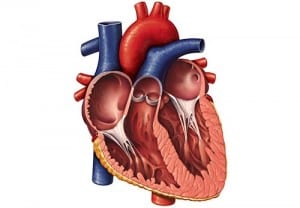
Using sophisticated computer modelling, a University of Newcastle researcher has helped find the missing piece to a 20-year cardiology puzzle – working out precisely how the heart regulates its beat.
Using sophisticated computer modelling, a University of Newcastle researcher has helped find the missing piece to a 20-year cardiology puzzle – working out precisely how the heart regulates its beat.
Associate Professor Derek Laver, in collaboration with Professor Mark Cannell from the University of Bristol in England, investigated the factors that trigger and also terminate the microscopic releases of calcium which regulate the heart muscle.
Professor Cannell discovered in 1992 that calcium “sparks” localised within a cell were causing the contraction but he and other researchers couldn’t determine what limited the spark and allowed the heart to relax after its beat. The processes occur on a molecular scale that is difficult, if not impossible, to study within living cells.
“We both had the same gut feeling but could only solve the problem by doing a three-dimensional computer model of the organelles (a subunit within a cell),” Associate Professor Laver said.
“I ended up taking a sabbatical and worked cheek by jowl with Mark for five months. When we pressed the ‘run’ button for the model we didn’t know if it would be successful, but two hours later the answer came out and it worked.”
Associate Professor Laver likened the mechanism to an alcohol nip dispenser.
“The release sites are compartmentalised but have the rest of the calcium stores attached to them. The ion channels open and close, disgorging their local stores then replenishing from distant regions. It happens with each heartbeat,” he said.
“We didn’t embark on this because it’s a medical problem – rather, it’s a basic science problem. But once you understand the mechanism you can have a better view on medical issues.”
Professor Cannell said it paved the way to improved understanding of heart failure, with evidence suggesting that the calcium release mechanism becomes faulty. “We have been able provide the necessary insight into the complex behaviour of this fundamental system,” he said.
The next step is to introduce the known effects of antiarrhythmic drugs to the 3D modelling to explain exactly why they work.
“Most of the current generation of antiarrhythmic therapies were discovered by accident and it’s hard to improve on them if we don’t know what we’re looking for,” Associate Professor Laver said.
Their findings have been published in Biophysics, the Journal of Cellular and Molecular Cardiology and Plos Computational Biology. A fourth paper is pending.
* Associate Professor Laver researches in conjunction with HMRI’s Cardiovascular Program. HMRI is a partnership between the University of Newcastle, Hunter New England Health and the community.

HMRI would like to acknowledge the Traditional Custodians of the land on which we work and live, the Awabakal and Worimi peoples, and pay our respects to Elders past and present. We recognise and respect their cultural heritage and beliefs and their continued connection to their land.
Hunter Medical Research Institute
We’re taking healthy further.
Locked Bag 1000
New Lambton
NSW, Australia, 2305


This site is protected by reCAPTCHA and the Google Privacy Policy and Terms of Service apply.
Copyright © 2024 Hunter Medical Research Institute | ABN: 27 081 436 919
Site by Marlin Communications
